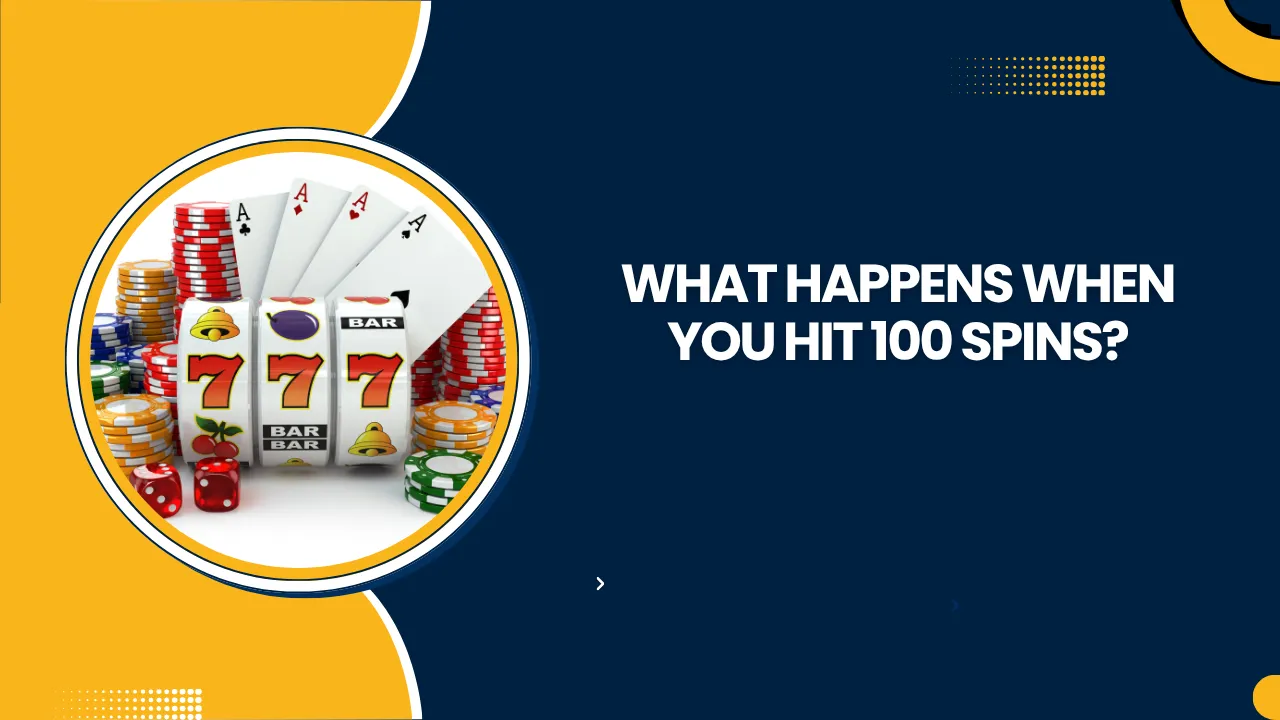Every slot player has asked this question at least once: what actually happens when you hit 100 spins? Whether you’re playing in a land-based casino or on your favorite online platform, that milestone can feel like a turning point — a psychological checkpoint where luck, math, and probability all seem to collide.
But from an expert’s perspective, understanding what happens after 100 spins isn’t about superstition; it’s about probability, variance, and the design of slot machines themselves. The results you see aren’t random chaos — they’re the product of complex algorithms that balance entertainment with fairness.
As someone who’s spent years analyzing both physical and online slot systems, I’ve found that hitting 100 spins is less about reaching a magical number and more about recognizing the patterns, emotional cycles, and technical workings that shape your experience. Let’s explore what that really means.
The Psychology of Reaching 100 Spins
Most players don’t track their spin count consciously. But those who do often experience something interesting — anticipation. By the time you reach 100 spins, your mind has created a narrative: maybe you’ve seen a few near misses, small wins, or bonus teases, and you start to feel like a “big hit” must be around the corner.
In reality, slot machines are designed to balance wins and losses across millions of spins, not hundreds. Still, the act of hitting 100 spins can influence your perception of progress and luck. It’s similar to running 100 meters in a sprint — it feels like a milestone, even though it’s part of a much larger journey.
Online casinos capitalize on this psychology by offering features like spin counters, milestone bonuses, and loyalty rewards. For instance, some sites reward consistent play through achievements or spin-based challenges, giving that 100-spin mark a more tangible reward.
The concept becomes even more enticing when connected to offers like 100 free spins no deposit uk, which allow players to experience those first 100 spins risk-free. These promotions provide a clear window into how your session unfolds statistically — showing that even with free spins, randomness and return-to-player (RTP) rates remain central to the game’s balance.
How Slot Algorithms Handle 100 Spins
Slots run on a Random Number Generator (RNG), a system that ensures every spin outcome is independent of the last. Whether it’s your first spin or your hundredth, the chance of landing a jackpot symbol remains identical.
However, because the human brain naturally looks for patterns, players often think that 100 spins “should” reveal something new — a big win or a bonus round. In truth, you might see nothing special at all, or you might trigger multiple features close together. That’s variance in action.
Variance, or volatility, defines how frequently and how much a slot pays. High-volatility games may stay quiet for dozens of spins before delivering a large payout, while low-volatility ones offer more frequent, smaller wins. After 100 spins, a high-volatility slot might still be “building tension,” whereas a low-volatility game will likely show a steady rhythm of wins and losses.
It’s also important to consider RTP. If a slot’s RTP is 96%, that doesn’t mean you’ll get £96 back after spending £100 — it means that over millions of spins across all players, the machine pays out about 96% of total wagers. Your 100 spins are just a snapshot in a much bigger picture.
What Data Shows About 100-Spin Sessions
Casinos and developers analyze massive data sets to understand player behavior. In aggregated data from thousands of player sessions, the first 100 spins tend to be the most emotionally charged. Players are still in discovery mode — testing the graphics, sounds, and pace — and their perception of fairness forms during this window.
This is why many modern slots are programmed with “front-loaded engagement.” Bonus features, free spins, or near wins might appear early to capture attention. But mathematically, nothing changes — the RNG continues producing independent results.
For professionals who test slot performance, 100 spins is often used as a baseline measurement. It’s long enough to reveal variance patterns and test gameplay flow, yet short enough to manage manually. When evaluating a new slot, experts might run multiple 100-spin simulations to gauge volatility and average return.
The Emotional Curve of 100 Spins
Beyond the numbers, there’s an emotional journey that players go through in 100 spins. The first 10 spins bring excitement and curiosity. Between spins 30 and 60, engagement peaks — players feel invested and often increase their bets slightly. By the time they hit 100 spins, the tone depends entirely on outcomes. A few wins can reinforce the desire to continue; a long dry streak may prompt a break.
Slot designers are acutely aware of this curve. They craft audiovisual cues — flashing lights, celebratory sounds, even rhythmically timed reels — to keep the brain stimulated. The goal isn’t manipulation but sustained entertainment. The thrill of the “next spin” is what keeps slots captivating.
The Role of Bonus Features and Free Spins
Hitting 100 spins also often overlaps with bonus mechanics. Most slot games offer free spins or multipliers triggered by certain symbols. While RNG governs when these bonuses appear, game design ensures they occur frequently enough to maintain engagement.
Interestingly, many players report that bonuses seem to trigger more often after longer play periods. This isn’t luck manipulation — it’s perception. The human brain remembers big moments and overlooks uneventful ones, so after 100 spins, any bonus feels like overdue justice rather than random chance.
When promotions like 100 free spins or deposit bonuses are involved, casinos cleverly use that structure to extend playtime. A 100-spin session gives players enough time to experience multiple reward cycles, amplifying excitement without increasing risk too quickly.
The Mathematics of Randomness and Expectation
Understanding what happens after 100 spins requires accepting the core principle of randomness. Every slot uses an algorithm that picks numbers thousands of times per second, assigning each reel position to a specific combination. When you hit “spin,” the RNG locks in the current value.
No matter how long you play — 10, 100, or 1,000 spins — the odds don’t shift in your favor or against it. There’s no “due win.” This is why responsible gambling experts encourage setting limits based on time and enjoyment rather than “chasing” outcomes.
However, over time, patterns emerge statistically. For example, if a slot’s advertised hit frequency is 1 in 5, you might expect around 20 wins across 100 spins — though in reality, that number could vary significantly. Variance ensures unpredictability, which is the very essence of gambling excitement.
Why Casinos Track Spin Behavior
Casinos and online platforms use spin data to understand player engagement, not manipulate outcomes. By analyzing how players behave across 100-spin intervals — whether they increase bets, switch games, or cash out — operators refine loyalty programs, bonus offers, and retention strategies.
For instance, if many players leave after 90 spins, the casino might introduce a small incentive, like a “100th spin bonus,” to encourage longer sessions. This blending of psychology and marketing is subtle but powerful, showing how the 100-spin mark has become a natural benchmark in the player journey.
Lessons for Players After 100 Spins
If you’re wondering what 100 spins should tell you, the answer is simple: it’s a test of the game, not a test of your luck. After this point, you should have a clear idea of the slot’s volatility, pacing, and reward structure.
If you’re ahead after 100 spins, that’s a good time to reassess — not necessarily to stop, but to set realistic expectations. If you’re behind, remember that chasing losses rarely works in a random system. Every spin remains independent, and luck has no memory.
Experienced players treat 100 spins as a benchmark for comfort and entertainment value rather than a sign of success or failure. The best mindset is curiosity over control — enjoying the game’s design, sound, and suspense rather than expecting a guaranteed result.
Final Thoughts
Hitting 100 spins might feel symbolic, but it’s not a turning point in the mathematical sense. Each spin is still governed by randomness, yet emotionally, that milestone helps players gauge their rhythm and experience. Casinos understand this and have built entire engagement systems around it — from milestone bonuses to free-spin promotions that replicate the thrill without direct financial risk.
So next time you reach that 100th spin, pause and reflect. You’ve just completed a miniature journey of probability, design, and psychology — the essence of what makes slot gaming so uniquely captivating.










